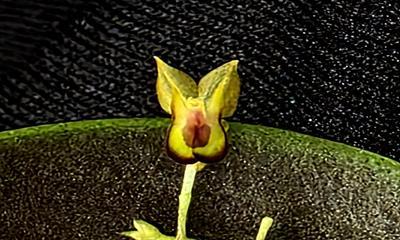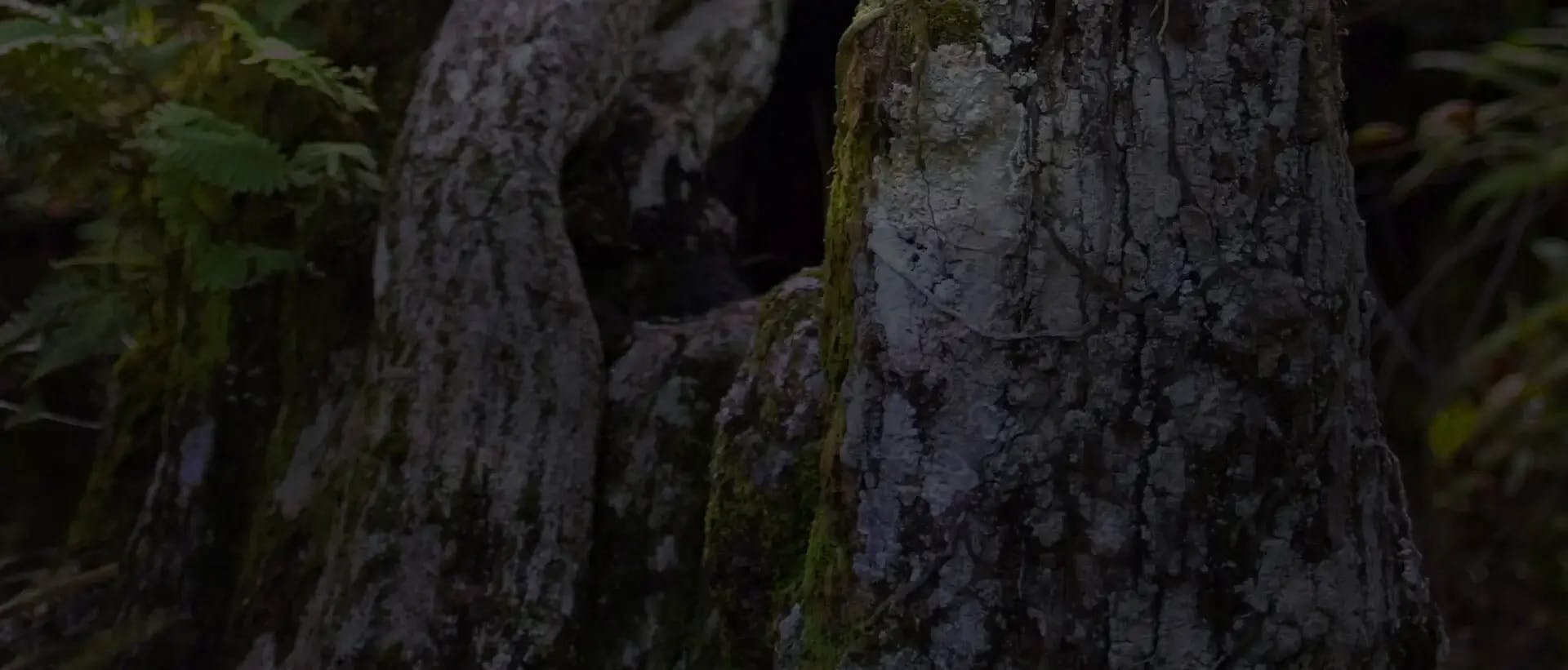
SITF Submissions and Findings
The Species Identification Task Force receives submissions from orchid judging centers or exhibitors.
Lepanthes ejecta 'Little Weirdos' CBR 2025-10-11

Lepanthes declivis 'Pleurothallidian' CBR-2025-10-11

Podochilus serpyllifolius 'CofO Little Ghost' CBR 2025-10-09

Bulbophyllum stellatum Bryon CHM 2025-10-09

Lepanthes tamaensis 'Nia' CHM 2025-10-08

Bulbophyllum nitidum 'Very Large' HCC 2025-10-06
Finding
Sitf confirms that this plant is Bulbophyllum nitidum (Oct 2025). This plant is an excellent match to the description and photo in Siegerist's book, "Bulbophyllums and their Allies", pg. 193, plate 61, and to photos in the OW and the IOSPE.
Guarianthe skinneri (Coerulea) 'Jean's Blue Dream' CCM--CHALLENGE 2025-10-05

Guarianthe skinneri (coerulea) 'Orchid Eros' HCC--CHALLENGE 2025-10-05

Cattleya Valentine (1900) 'Barry Paul Mezey' AM--CHALLENGE 2025-10-05

Bipinnula montana 'Bonatto' CBR 2025-09-30
Finding
SITF confirms that this plant is Bipinnula montana (Oct 2025). This plant matches photos in the IOSPE and orchidroots of this interesting and fascinating species. There are other matching photos available on the internet as both B. montana and the synonymous Bipinnula canisii. The lump-like crests at the base of the lip, lip fringe and the fringing of the lateral sepals are a perfect match.
Constantia cristinae 'Marcio Bassi' CBR 2025-09-30
Finding
SITF confirms that this plant is Constantia cristinae (Oct 2025). This plant appears correct based on leaf form and plant habit. The flower photo is not well focused and difficult to see the details; however, the color and flower form matches the flower photo, especially the bright orange callus, and the flower and plant photo in the IOSPE. The flower color seems somewhat variable; refer to the photos in the orchidroots.com.
Isochilus linearis 'Bryon' JC 2025-09-29

Miltonia kayasimae 'Arnie' HCC 2025-09-25
Finding
SITF confirms that this plant is Miltonia kayasimae (Sep 2025). This plant matches photos of the distinctive M. kayasimae shown by Grobler and Baptista. This is the only species with the combination of an extended lip claw and column wings that create a small hood over the anther.
Barbosella gardneri 'Copper Fox' HCC 2025-09-18
Finding
SITF confirms that this plant is Barbosella gardneri (Sep 2025). It is an exact match to photos in the orchidroots.com. The lip is an exact match for the species and the sepals and petals also match. Closely matches the photo and line drawing in the IOSPE.
Phragmipedium dalessandroi 'Zephyr's Choice' AM 2025-08-31

Maxillaria hematoglossa 'Jardin botanique de Montréal' CCM 2025-08-27
Finding
SITF confirms this plant as Maxillaria hematoglossa (Aug 2025). Maxillaria praestans, cucullata and hematoglossa are all closely related. However, M. cucullata does not have this dark of a lip and does not have spotting in the petals. M. praestans only has spotting towards the very center of the flower and the side lobes are half the length of the lip, while M. hematoglossa side lobes are about a third the length of the lip. This plant form does not fit M. meleagris; that species has a much smaller and finer leaf compared to this plant. This plant also matches the SITF validated prior 2022 CBR award to M. hematoglossa.
Stanhopea hernandezii 'Betsy' AM 2025-08-26
Finding
SITF confirms that this plant is Stanhopea hernandezii (Sep 2025). This plant matches the images in Rudolf Jenny's, "The Stanhopea Book". Several supporting images may be found in the orchidroots.com and a closely matching photo in the IOSPE. These flowers are a little larger than the 9-11 cm shown in the IOSPE, but are still within range.
Phalaenopsis pantherina 'Krull-Smith' AM 2025-08-26
Finding
SITF confirms this plant as Phalaenopsis pantherina (Sep 2025). Species in the cornu-cervi complex are similar and the key difference is in their lip form. Examining the lip dissection and the comparison image of the three similar species, this clearly looks like P. pantherina and is not P. cornu-cervi or P. boreenensis. This plant also matches prior AOS awards, which were not previously verified by SITF or other authority.
Phragmipedium cabrejosii 'Alicia' CBR 2025-08-26
Finding
SITF confirms this plant as Phragmipedium cabrejosii (Sep 2025). This plant is an excellent match in size, form, and color to the distinctive species, P. cabrejosii. This plant matches the original description and photos found in the 2019 Phytotaxa article, "New Species of Phragmipedium (Orchidaceae: Cypripedioideae) from Peru" by Pupulin, et. al. Compared with P. caricinum, it is distinguished by a simple inflorescence, an elliptic dorsal sepal, that is apically white, with shorter, apically twisted, pale yellow petals tinged with rose, and a ovate-subrhombic staminodial shield vs. reniform.
Tolumnia scandens 'Cochis' CCE 2025-08-26
Finding
SITF has determined this plant to be Tolumnia sylvestris, not Tolumnia scandens (Sep 2025). Dr. Guido Braem has identified this plant as Tolumnia sylvestris.This plant matches T. sylvestris in Guido Braem's new monograph, which shows T. scandens and T. sylvestris.
Bulbophyllum salmoneum 'J&L' CHM 2025-08-23
Finding
SITF confirms this plant as Bulbophyllum salmoneum (Aug 2025). The original description and photos of this species can be found in Taiwania 57: 128 (2012) in Researchgate: https://www.researchgate.net/publication/267825382_New_Orchid_Taxa_and_Records_in_the_Flora_of_Vietnam. The description and photos of this species exactly match this distinctive plant, as do many photos in orchidroots.com.
Ornithocephalus myrticola Jennifer CHM 2025-08-20
Finding
SITF confirms this plant as Ornithocephalus myrticola (Sep 2025). It is an excellent match to photos in Lavarack and Harris' Botanica (pg 409), Aldrich & Higgins compendium (pg 351) and McQueens' Miniature Orchids (pg 141). It is an excellent match to a distinctive species. Supporting photos an be found in the OW, IOSPE and orchidroots.com.
Liparis resupinata 'Irene' CBR 2025-08-18

x Brassocattleya fregoniana Barefoot Brooklyn AM 2025-08-16
Finding
This is not a Natural Hybrid, but a man-made hybrid with Brassavola tuberculata x Cattleya guttata, so SITF identification is not required. The cross name will have to be registered with the RHS and SITF will not be required for the Award.
Vanda tricolor var. purpurea 'Mary Motes' CHM 2025-08-15
Finding
SITF confirms this plant as Vanda tricolor var. purpurea (Aug 2025). The variety of this plant was corrected to be var. purpurea vice var. purpurata per Martin Motes. V. tricolor var. purpurea is a validly published forma as described by Cecile Carr in 1932 from plants obtained from Alor. Martin Motes intends to elevate this forma to species status in the Malayan Orchid Review. When this is accepted by Kew, SITF will revise the finding accordingly. According to Dr. Motes, the var. purpurea differs from the standard V. tricolor in plant size, leaf shape and length, flower size and color, lip shape, inflorescence and flower count.
Cleisostoma duplicilobum 'Springwater' CBR 2025-08-14
Finding
SITF confirms this plant as Cleisostoma duplicilobum (Sep 2025). This plant matches the images in Kew's POWO and the IOSPE. According to the IOSPE, C duplicilobum and C rostellatum are very similar, but differ in that C rostellatum has protuberences [auricles or tubercles] at the midlobe of the lip. Flower size matches C. duplicilobum.
Tolumnia prionochila 'Golden Hedgehog' CCM 2025-08-14
Finding
SITF has determined this plant to be Tolumnia urophylla, not Tolumnia prionchila (Sep 2025). Dr. Guido Braem, describing taxonomist of record, has identified this plant as T. urophylla. It has a distinctive plant form with long inflorescences that form numerous keikis that tend to drop off and form new plants. This plant matches several prior AOS awards to T. urophylla.
Dendrobium heokhuii 'Petra Flanagin' CBR 2025-08-06
Finding
SITF confirms this plant as Denrobium heokhuii (Aug 2025). This plant closely matches André Schuiteman, de Vogel and Vermeulen's photo in the IOSPE and to many other photos in the orchidroots.com. The species is very distinctive in Dendrobium Section Crumenata.
Encyclia oncidioides 'Sara Rayner' CBR 2025-08-03

Eulophia maculata 'Winning' CHM 2025-08-03
Finding
SITF confirms this plant as Eulophia maculata (Aug 2025). This species, which is widespread, is much more commonly known as Oeceoclades maculata (synonymous with Eulophia maculata). The lip of E. maculata has a big, pronounced v-shaped crest, large enough to almost look like lip lobes, at the very back of the lip which matches this plant. The bulbous yellow nectary also can be seen in online images of the flower. Another species, Eulophia monophylla is considered synonymous with E. maculata. Matching photos can be seen in the IOSPE as Oeceoclades maculata and in the orchidroots.com.
FREE ACCESS: Orchid DealWire
Get notified when orchid vendors have special promotions and exclusive savings.







